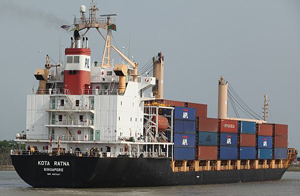A new “Buy American Act” restriction passed by the U.S. House of Representatives could undermine the ability of the U.S. to negotiate access to new procurement markets for U.S. firms. On May 30, 2014, Inside U.S. Trade reported that the U.S. House of
A recent posting recommended the inclusion of strong anti-corruption provisions in the Transatlantic Trade and Investment Partnership (TTIP). In a related posting on the FCPA blog, Nadine Tushe has considered the evolution of anti-corruption provisions in

Summary
The Trans-Pacific Partnership (TPP) is akin to other free trade agreements (FTAs) that the United States (US) has negotiated over the past two decades that are aimed at opening markets and providing new opportunities for USÂ goods, services, and firms.
The TPP is the first FTA to be negotiated by the Obama Administration.
Update on TPP and New FTA Negotiations Initiated by the Obama Administration The countries engaged in the negotiations of TPP have expanded to a group of 12 with the addition of Japan. They now represent nearly 40 percent of global GDP and a third of global trade.  While the parties made substantial progress on the negotiations in 2013, they were unable to complete them as hoped. No date has been set for finalizing the agreement. The Obama Administration has initiated negotiations of a second comprehensive FTA  -- the Transatlantic Trade and Investment Partnership (TTIP) with the European Union (EU). A successful negotiation of the TTIP with the EU and its 28 member states would more than double the number of countries subject to FTAs with the U.S. Currently, the U.S. has 14 FTAs that cover 20 countries (Australia, Bahrain, Canada, Chile, Colombia, Costa Rica, the Dominican Republic, El Salvador, Guatemala, Honduras, Israel, Jordan, Mexico, Morocco, Nicaragua, Republic of Korea, Oman, Panama, Peru and Singapore). Read More This posting by Jean Heilman Grier was first published in Asia Pathways, a blog of the Asia Development Bank Institute, on May 31, 2013.Summary The Trans-Pacific Partnership (TPP) is akin to other free trade agreements (FTAs) that the United States (US) has negotiated over the past two decades that are aimed at opening markets and providing new opportunities for US goods, services, and
Abstract Government procurement has been treated quite differently in trade agreements initiated by the US than in those that have been led by Asian governments. US-led trade agreements, including the Trans-Pacific Partnership Agreement (TPP), incorporate
The TPP parties should use a variety of tools to address Malaysia’s concerns with opening its government procurement under the TPP. According to recent press reports, Malaysia is “wary” of procurement commitments in the Trans-Pacific Partnership (TPP)
The TPP should base its procurement rules on the revised WTO Government Procurement Agreement to ensure the most up-to-date provisions and contribute to the expansion of international procurement standards in Asia. Government procurement will be an integral
In light of the recent Canada-EU agreement, the United States and Canada should bolster the procurement coverage in the TPP by exchanging access to their electric utilities. Canada’s opening of the procurement of its energy utilities to the European Union
The primary benefit for the U.S. in the TPP government procurement negotiations would likely be the opening of the procurement markets of the four TPP partners with which it does not yet have procurement agreements. For the United States, the success of the